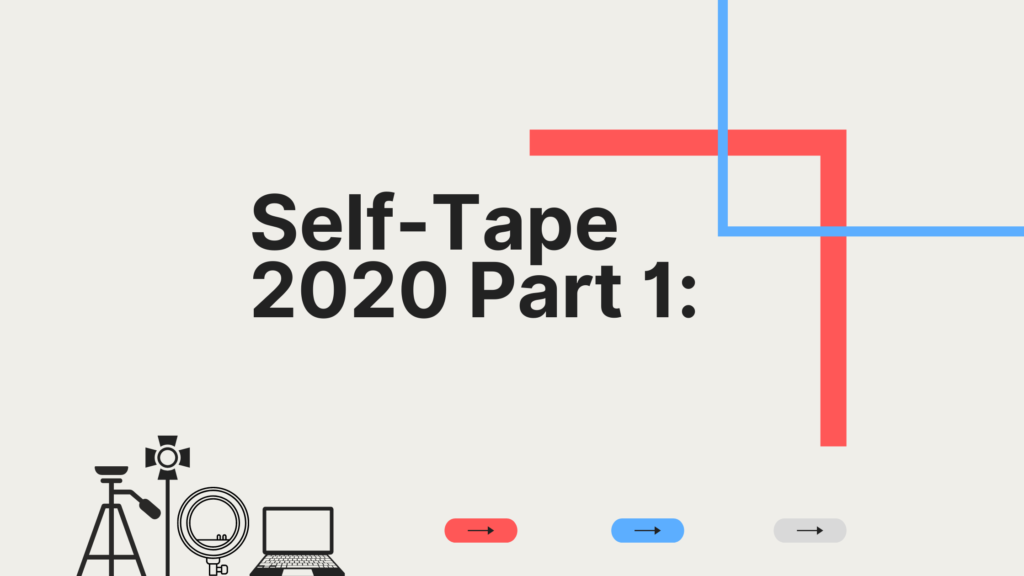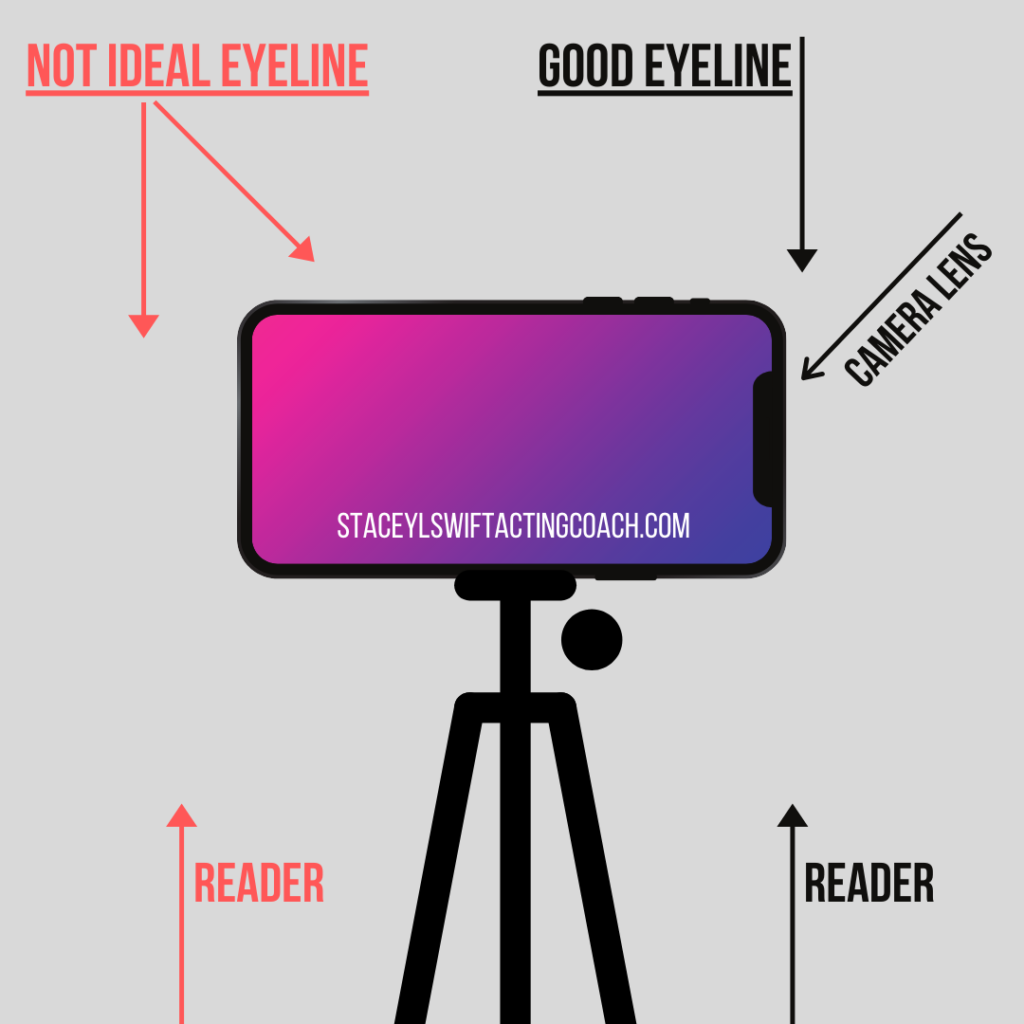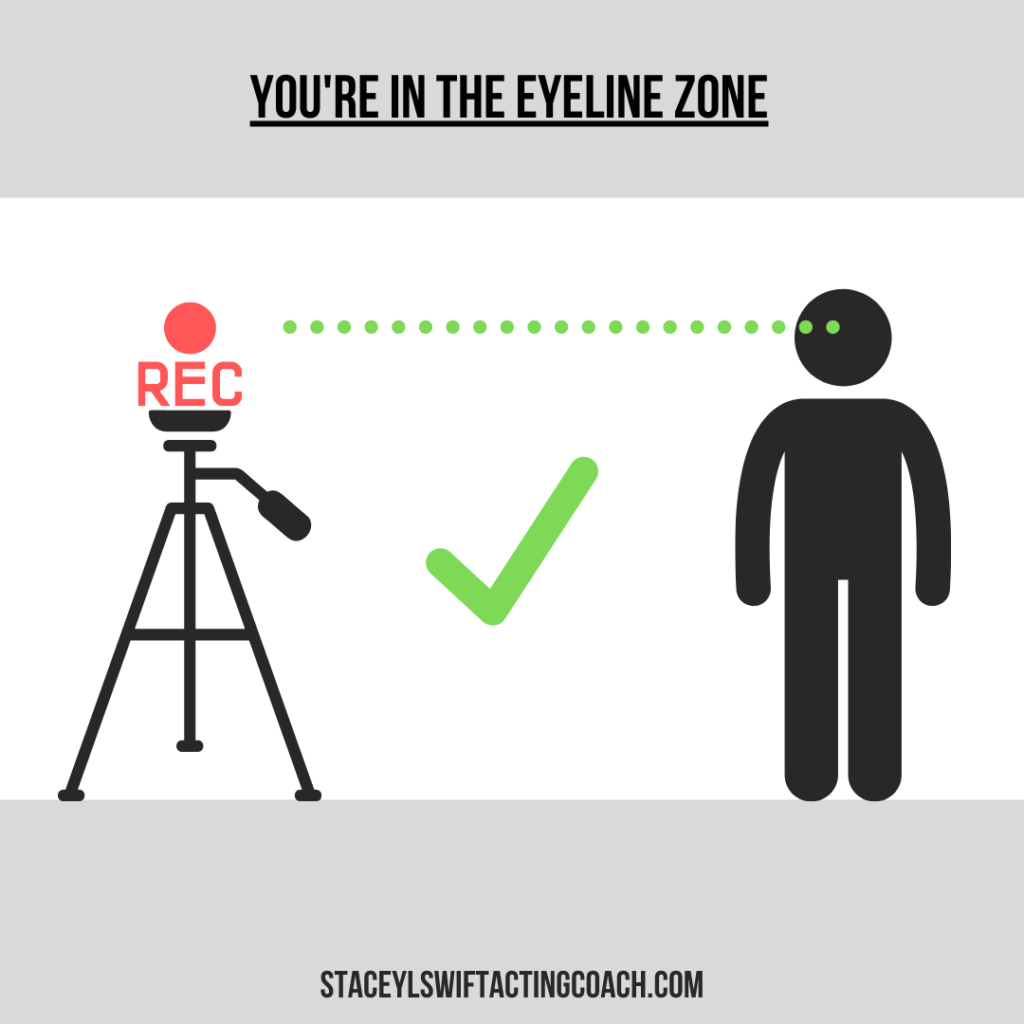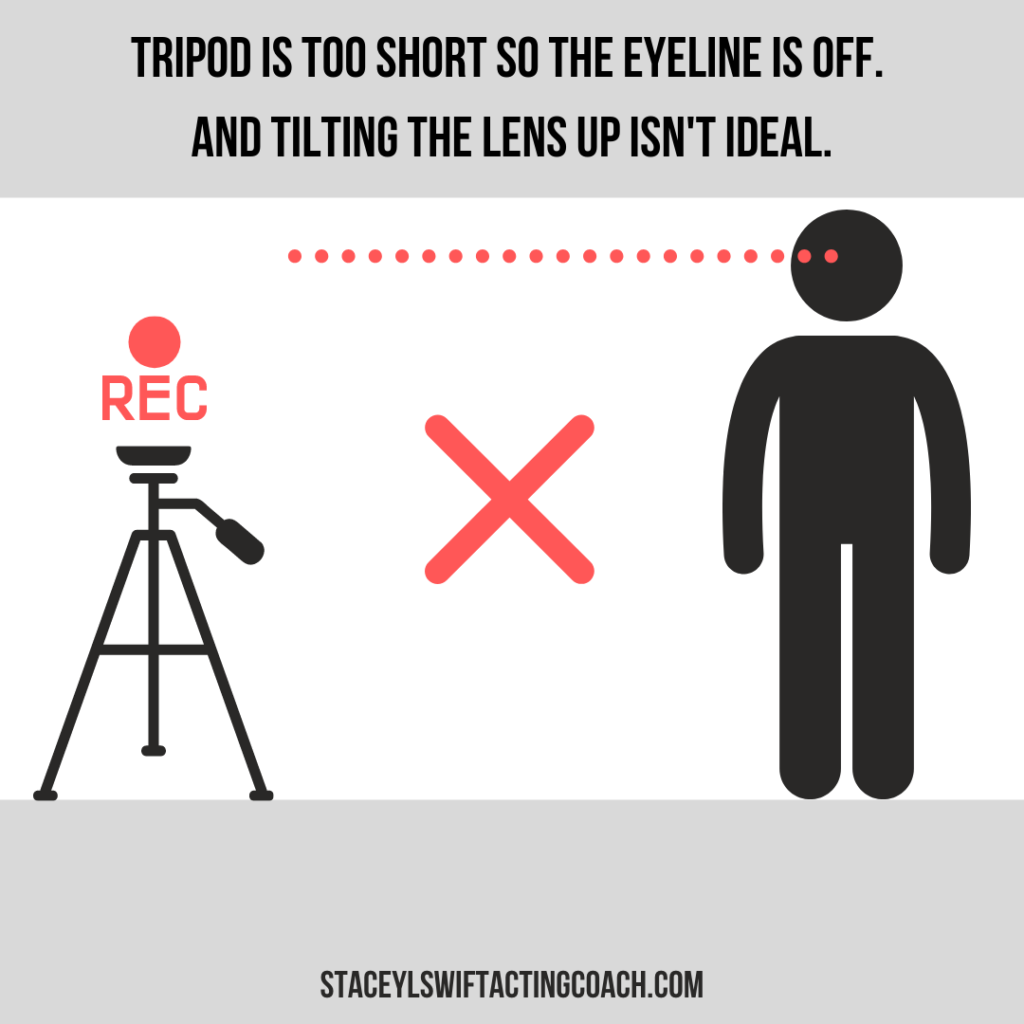
Another blog about self-tapes? No. Promise
As an actor living through a global pandemic, when in-person auditions are rare, it’s more important than ever to make sure your self-tape technique is tight. Because self-tape auditions are the future and the future is here.
From working with the camera to directing your reader, you want to demonstrate that you know what you’re doing and are committed to doing it well. You want to ‘wow’ the room. So they get you back in the room. Again and again. And that means knowing what your tools are and how to use them effectively. Like, really really effectively.
A good eye-line is an actor’s superpower
This may seem obvious, but if you step over to Instagram and hashtag search ‘self-tape audition’ you’ll find actors with eyelines too high, too low, too off to one side.
You want to place your camera at eyeline. Which generally means at your eyeline height level, whether sitting or standing. Not above or below. But level with your eyeline.
Casting usually requests a medium close-up frame: just above the shoulders and right above your head. Think of your eyeline as the second part of your framing. You’re framing your face and leveling your eyes within that frame.
Second, you want to position yourself on the same side of the lens. Then place your reader directly across from you. If you’re speaking to two people in the scene – place them just to the other side of the camera. The below illustration should make it very clear.

Now make sure your reader is sitting if you’re sitting or standing if you’re standing. Avoid trying to accommodate your reader for helping you out by saying they can sit when you’re standing in the scene. Because it means you look down at them, and that, in essence, is working against the benefits of the camera, which holds all the power for the actor.
Ultimately, casting wants to connect with you. They want to see you, in the character, connecting with the person you’re speaking to. This happens in the eyes. Doesn’t mean you can’t look away. Of course not. It just means you have a focus point to work from, that allows the viewer to meet your gaze. So much is conveyed in the eyes. Every feeling. Every shift in thinking.
So give yourself that opportunity. Get your reader on board. Be assertive. If they’re a professional, they won’t bat an eye, and you’ll return the favor, right?
What if my reader is virtual?
Yes. We have entered the Covid-19 era of virtual everything, and we’re all scrambling to find ways to accommodate this new virtual reality. Our readers are often across town in their apartments, but the same eyeline rules apply. If your reader is virtual, try placing your laptop on a chair, maybe stack some books underneath. Just play with it and try to get a level eyeline.
This is particularly challenging if you’re standing in your self-tape. Sometimes you just need to connect with a dot on the wall to make a logical eyeline while working your acting magic to connect to the person speaking through your laptop. But if you want to go the extra mile – consider buying a speaker stand so your virtual reader can be as close to eyeline as possible. You just mount your laptop or tablet on top and you’re good to go.
Better to adapt to the new normal than be constantly catching up, right?
Direct your reader. It’s your show
You got the self-tape request, broke down the scene, researched the show, and watched a few episodes to get familiar with the world – you need to direct this self-tape episode of yours. Don’t be afraid to ask for what you need to make the scene work.
When you’re in an actual audition room you can’t say to the reader, “Hey can we pace this up a bit,” or “let’s try this again but take a pause beat before you ask me that last question”…etc. But you can with your own self-tape. So direct it. Take control.
How many takes should a self-tape take?
As many as it takes! Also, that’s a great warm-up tongue twister.
If I had a dollar for every time I read somewhere or heard someone say: “Don’t do a lot of takes. You won’t be able to do a bunch of takes in a casting office anyway so…”
So what? You’re not in a casting office. You’re home and you can shoot however many takes you want until you get the one you want.
How many times have you walked out of an audition and thought – shit I wish I had one more take, I could have nailed it. Well, you’re home. So tape it until you know you nailed it.
And if you find you have two very solid takes that play with two different perspectives on the role, send both. Just be sure they’re both good. Don’t send two just because you can’t decide which to send. If you’re going to expect casting to sit through both – they both need to shine.
I’ll explore more about refining your ‘take’ process in Part 2.
The nitty-gritty: Get your tech together
Smartphones and Mics:
Shooting on smartphones is fine. The sound quality is good. The video quality is excellent. So there’s really no need to mess around hi-spec cameras and microphones. There really isn’t. Moving on.
Tripods:
With tripods for self-tapes – you want a tripod that can extend to match your height. This is more of an issue for taller actors. The average tripod is between 50-63 inches which at its maximum is 5.25 feet. So if you’re 5’2, it’s perfect. If your 6 feet – it’s too short and your eyeline won’t be level. And tilting up is not a good angle on the face.

Backgrounds and backdrops:
I recommend a collapsible background. Why? No drama. They’re portable, easy to pop-up, and collapse down. Fabric backdrops that need stands and clips – it’s too much. Same with paper backgrounds – the paper is fragile, it requires a big set-up, it’s not portable – too much drama.
I use the 6×7 Lastolite Collapsible Background and it’s not cheap but it’s rugged and reliable. I prefer the 6×7 because you can move around should the scene call for some physical action. It’s big enough to lean against the wall, which means I don’t need a background stand to elevate its height.
A good budget option is the Studio Essentials 5×6 which comes with a stand sold by Adorama Camera. It’s portable and affordable. *Also Adorama Camera is not paying me for this shout out nor is Lastolite.
And finally lighting:
Look, they just need to see you. When I first moved to the US again from London, like day two, a self-tape audition came in from my London agent. It was a Sunday evening and I had to submit the next day. All my belongings were on a freight ship somewhere in the Atlantic. I had no time and no kit. So, I ran to Ikea, bought three lights with white paper shades, and stacked them on some chairs a foot from my face. And it worked! I was well-lit. Now that was a suitable short term solution. You obviously want to up your game here.
There are numerous lighting kits that will make this happen. You can go the full 3-point lighting route or the 2-point lighting route. LED video light kits are impressive, but also expensive. All the above will do the trick. I’m a fan of Fovitec Lighting Kits because they’re more sturdy than a lot of the competition in the same price range.
Ring-lights
Ring-lights are popular. They do form rings in your eyes. Literally. But they are certainly convenient and cost-efficient. If you’re thinking of buying one, google ‘ring-light eye’ and check out the images that pop up. They’re not for everyone.
The beauty in the details
So I’ve covered a lot of details here about self-tapes. Technical execution and smart shooting technique are important, but in isolation, won’t get you the job. But combined, with a well-prepared audition, will certainly bookmark you in a casting director’s mind as a polished, professional actor. An actor that takes this work seriously. An actor they want to see again…
Don’t cut yourself short. Invest, fine-tune, get specific, and commit to your self-tape process. It’s a golden ticket. Take it.
Happy Self-Taping and Audition Smashing.
– Stacey L. Swift

